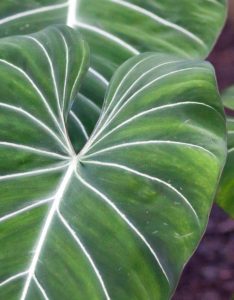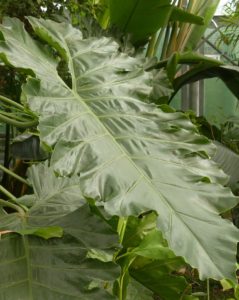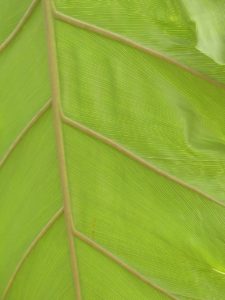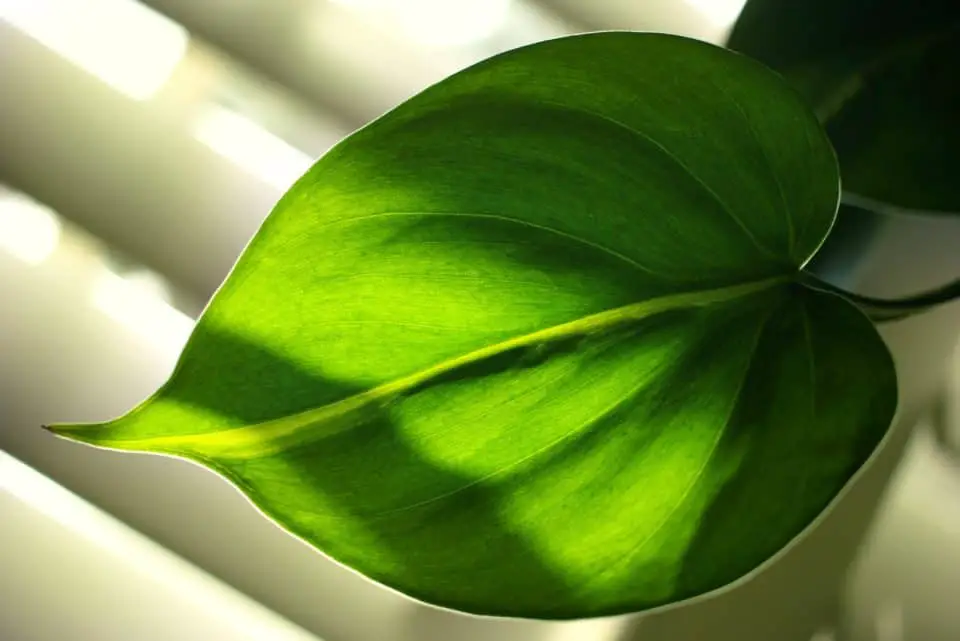Some links in the post are affiliate links and I get a commission from purchases made through some links found in the post.
Philodendron Brasil, a household plant, is easy to grow. It is charming in its appearance and is very spacious and bushy.
It is a favorite for adding a decorative element to your lawn. You can train this plant to vine along a pole fixed in its pot.
The broad leaves are heart-shaped and are green and lime yellow in color.
It can make your lawn pretty colorful and will also bring a lively view to any nook of your house. You can place them indoors in bright spots.
The newly growing leaves may turn out to be peachy, making it a rather vibrant plant.
You can always trim the plant just below its leaves to your liking for a wild bushy plant or a graceful vine.
Why is my Philodendron Brasil Dying?
Philodendron Brasil requires a certain amount of light and water. Excess or deficiency of these vital requirements contributes to your plant turning yellow.
The possible reasons your philodendron Brasil is dying is due to excess watering, direct sunlight, deep rooting, light problems, temperatures and diseases.
This can lead to your philodendron Brasil leaves to droop, turn yellow or turn brown which can lead to your plant to die.
1) Excess Watering
Excess watering can cause your roots to rot. The boggy mud causes the roots to weaken and hence, leads to your philodendron Brasil dying.
You should keep the soil moisture in check. Regular watering is not necessary unless the upper 25% of the soil dries out in the pot.
If you need help watering your plant, try using this automatic drip irrigation kit.
2) Direct Sunlight
A suitable place to plant a philodendron is a place where it would receive indirect light. It can vary from dim to bright sunlight.
Direct light may cause the leaves to turn yellow and die. The direct sunlight may burn out the leaves.
Therefore, keep this plant in a rather shielded place to help stop your philodendron Brasil from dying.
If your plant is struggling due to light, trying using this to help regulate the lighting.
3) Deep Rooting
The lowermost leaves that appear on a stem must be kept above the soil level. Otherwise, this can very likely cause your plant to die.
4) Sudden Shift to a Well-lit Area
Your philodendron might burn if it isn’t already habituated to a well-lit place.
If the plant grows in a dim light area and needs to be shifted outside, the process should be gradual.
5) Diseases
Certain diseases such as leaf blights may turn the leaf tips brown and lead to plant death.
The use of certain pesticides can help prevent such diseases. You can always use an organic insecticide like neem oil for this purpose.
If you’re enjoying this article, check out our article on how to care for a philodendron over winter.
Can a Philodendron Brasil Revert?

This plant is a rather confusing one. Philodendron brasil to your surprise may revert to a solid color or a stroked pattern too.
The most commonly reverted leaves are usually all dark green. These can also revert to a lime-green appearance.
If you’re lucky enough, one can have a stroked appearance with narrow or wide stripes of lime green.
The initial leaves are all variegated but the reverted leaves tend to be solid colored.
These reverting leaves usually appear from the new stems which grow from the main stem. Some leaves might show a cream-colored center while the edges are dark green.
These leaves are a sharp contrast to the dark green-colored ones that may grow in the same plant. The variegated leaves soon lose their colors as they get older.
Why is your Philodendron Brasil Losing Variegation?
Philodendron Brasil losing its variegation is a frustrating problem for many gardeners.
The prime reason for the plant to lose its variegation might be its advancing age.
It is a survival tactic for most of the plants including the Philodendron brasil.
The survival might be struggling with the changes in light or the seasonality.
Changes in heat or cold can endanger a plant. To survive through such conditions, a plant might adapt by reverting to dark green leaves full of chlorophyll.
Limited chlorophyll can also cause the plants to lose their variegation. Variegated leaves are smaller than solid green leaves.
They have a lesser tolerance to heat or cold. These rather endangered leaves might pursue a way to make them more tolerant.
They can do this by reverting to green solid leaves with a sufficient amount of chlorophyll.
How to Fix your Philodendron Brasil Losing Variegation:
You can fix a Philodendron Brasil who is losing variegation by the following methods:
1) Trim green leaves
The loss of variegation can be fixed by trimming the green leaves. Don’t trim all the leaves since some are required to maintain the photosynthetic process.
2) Enable nodes to produce new variegation
To add variegated growth, trim down the stem back to a leaf that shows variegation.
This exposes the node producing variegation and stimulates it to continue producing variegated foliage.
3) Trim overly variegated leaves
Do consider trimming highly variegated leaves. These look appealing but can drain your plant of nutrients.
You may also like: Can a philodendron be put outside?
Prevention of your Philodendron Brasil Losing Variegation:
Loss of variegation can be prevented by:
1) By keeping the plant in a pot
Keeping the plant in a pot can usually prevent it from losing its variegation as variegation is due to an imbalance in its light and moisture.
Keeping it in a pot would thus, allow the plant to be relocated whenever it starts losing its variegation.
2) Maintaining proper sunlight
Providing bright sunlight to the plant would also encourage variegation. It lessens the chlorophyll distribution and hence, prevents variegation.
The shady areas still allow the plant to grow completely fine. But it might affect its variegation due to dim sunlight.
3) Prevent overwatering
Overwatering can also cause the plant to lose its variegation.
Although enough water must be present to build chlorophyll, one must keep in mind that philodendron is a waterlogged plant. Its overwatering might cause it to lose its variegation.
4) Bringing the plants out in summer
If you’ve kept the plant indoors, bringing it out into the sunlight once in a while can help keep your leaves variegated.
As indoor plants, they should not be cooped up for display in your interiors. Changing their place will help to restore their variegation.
Why does your Philodendron Brasil have Wrinkled Leaves?
 Unstable growth conditions during the winter season have shown their effects on the leaves causing them to wrinkle.
Unstable growth conditions during the winter season have shown their effects on the leaves causing them to wrinkle.
The harsh winter usually interrupts the growth causing dormancy. The on and off growth may produce a wrinkly pattern all over the leaves.
Philodendron Brasil is a rather easy-to-grow plant. It can survive long periods without water but you should not prolong watering it for a certain amount of time.
This might lead to unavoidable wrinkling.
Temperature fluctuations when entering the winter season can cause wrinkling too. You must prevent it if you want wrinkle-free leaves.
Inadequate humidity has been also seen as a prime cause of this. Always keep a check by using a humidifier so that your plant has enough moisture to prevent this.
Why are your Philodendron Brasil leaves Curling?
Dry soil must not be present to avoid curling up the leaves. Water your plants till the top layer is not dry.
The leaves may limp or droop when the soil gets drier than usual. A filtered water system has been quite helpful to maintain your plants.
Our usual tap water has enough salts, chlorine, and several other impurities.
It may burn the tips causing them to curl or turn brown. If you are to use tap water, then be sure to drain the excess.
Be sure to place your plant in a static path devoid of any flowing air from a heating vent or a cooler.
The air blow turns the leaves curly at its tips and edges. It is more preferable to place your plant in a static airflow environment with adequate humidity. Dry places may cause the plant to struggle.
A certain amount of humidity is necessary so the leaves are not devoid of their moisture. It can help retain their shape thus preventing curling.
Why does your Philodendron Brasil have Small Leaves?
Philodendron brasil, a heart-shaped plant, usually grows to its fullest with painted leaves.
But one might experience some problems regarding how big the leaves grow. There are some factors to it.
Deeply rooted plants when placed in their pots might produce smaller leaves.
To aid this problem, one can place a pole in its center to help climb the plant like a vine. The vining leaves help produce bigger leaves.
Using fertilizer has proved to be a great way for a plant to grow bigger leaves. Try this easy to use fertilizer to give your plant that little boost.
Smaller leaves usually indicate that your plant requires a new blend of fertilizers to aid its growth. Keeping a check on the rooted plant might help with the problem too.
Final Thoughts: Why is my Philodendron Brasil Dying?
 This heart-shaped decorative plant will lighten and freshen up your interiors it’s many appearances.
This heart-shaped decorative plant will lighten and freshen up your interiors it’s many appearances.
You can have it wild and bushy or can create a vine out of it to your liking. This easy-to-grow plant is a gardener’s favorite.
But like other plants, proper maintenance and care is a must. You can always prevent its damage by following the few tips described above.
A bright sunny spot, adequate humidity, and appropriately spaced watering will help it survive in a harsh climate.
If you wish to propagate your plant, you can always cut it just below its nodes and place it in a clear water jar and wait for it to bloom.
Before you go, here are some more related articles I encourage you to read below to help solve more of your gardening issues:
How to Care for a Philodendron Tiger Tooth
Can Philodendron Grow in Shade
What are the Benefits of Having a Philodendron
What is the rarest philodendron
Why is My Philodendron Turning Red
About the Author:
Saad Ansar
Saad is an avid gardener himself and is a great lover of plants, animals, photography, & people. Currently, he is focused on photographing indoor plants & captioning beautiful outdoor sceneries. He writes and rewrites in-depth articles on nature and science.


